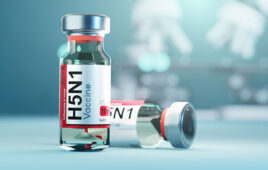 In the past, pharmaceutical companies bolstered profits with billion-dollar blockbuster drugs that treated large populations for common conditions. But with patents running out, and development costs soaring, that business model may no longer be sustainable.
In the past, pharmaceutical companies bolstered profits with billion-dollar blockbuster drugs that treated large populations for common conditions. But with patents running out, and development costs soaring, that business model may no longer be sustainable. Part 1 of this two-part article examines the hurdles pharmaceutical firms are facing in the 21st century. Part 2 highlights some of the innovations that are helping cut costs and timeframes.
The cost of bringing new drugs to market has multiplied dramatically in recent years. According to a 2012 article in Forbes, the average drug developed by a major pharmaceutical company costs at least $4 billion, and it can run as high as $11 billion.1 That figure factors in the costs of not only drugs that reach the marketplace, but also the many that fall by the wayside as well.
Many companies try to control the cost of failure by pursuing large-population drugs, and as a result, small-market drugs suffer, according to Mannix Aklian, founder and CEO of Label Independent, developer of Visual Assay, a tablet-based collaboration tool used for managing, capturing, and sharing assay data in real-time. “It’s about math: larger losses necessitate larger successes.” Aklian said. But, he continued, “It’s very frustrating for scientists. They went into this, heart and soul, to make a new drug discovery. Many of us went into the industry to make a difference.”
A recent study from an independent U.K. research organization,2 the Office of Health Economics – funded in part by industry – estimated the drug discovery price tag at a more conservative $1.5 billion. Their detailed survey offers additional insights on the challenges faced by drug-makers:
- Drug development costs vary across different therapeutic areas — neurology, respiratory, and oncology are associated with the highest costs; HIV/AIDS and anti-parasitic drugs are associated with lower costs. The most expensive indications can run twice the cost of their least-expensive counterparts
- Drug development costs skyrocketed nearly 600% from the 1970s to the 2000s, as drug-makers tackled more intractable diseases such as Alzheimer’s and cancer, driving down clinical development success rates
- Success rates fell from 1 in 5 in the 1980s to 1 in 10 in the 2000s
- As the complexity of the science underlying drug development became more complex and regulatory barriers rose, the process of bringing drugs to market slowed from 6 years in the 1970s to 13.5 years in the 2000s
It is not surprising then that some companies are exploring new business models. Novartis, for example, recently announced their intention to pursue drugs for smaller patient populations by targeting disease pathways, opting for long-term rather than immediate profits.3 These emerging business models also will need to include ways to cut costs across the board in the drug discovery and development process.
Other companies, such as Pfizer, have made profits by acquiring companies that own the patents to blockbuster drugs, but that strategy can only last for so long.
“I think if you look at the nature of the acquisitions trying to happen at the moment, reexamining internal processes is crucial,” said Kevin Connor, chief product officer, Decision Solutions Group, Decision Lens Inc., a leading provider of prioritization software solutions for making mission-critical decisions. According to Conner, companies who are acquiring other companies “appear to be in a position where they have mis-stepped, underinvested in their pipelines or ridden the success of their blockbuster products too long to the point where their pipelines are in trouble. They need to be more nimble, agile and adaptable.”
In their 2013 Profile, the Pharmaceutical Research and Manufacturers of America (PhRMA) estimated that its membership spent $48.5 billion on R&D in 2012.4 That figure becomes more daunting when you consider that for every 10,000 compounds that enter the pipeline, only one will likely receive approval, according to UVA Today.5 Even more sobering, PhRMA reports that only 2 in 10 drugs that make it to the marketplace return revenues that match or exceed R&D costs.4
“I think that probably there isn’t a pharma company on the planet that isn’t thinking about that challenge,” said Martin Giblin, vice president, Global Data and Safety Monitoring, Quintiles, a prominent provider of biopharmaceutical development and commercial outsourcing services. “Pharma, broadly speaking, needs to become more productive and efficient.”
With costs escalating, the regulatory landscape changing and competition increasing, pharmaceutical companies will need to become leaner in their processes. In Part 2 of this article, we will examine innovations that companies are bringing to the table to help pharma accomplish this goal.
References
1. Herper M. The truly staggering cost of inventing new drugs. Forbes. February 10, 2012.
2. Levine DS. New estimate of drug development costs pegs total at $1.5 billion. The Burrill Report. December 7, 2012.
3. DuBois S. Novartis CEO: We need to re-think the blockbuster. CNN Money. March 4, 2013.
4. Pharmaceutical Research and Manufacturers of America, 2013 Pharmaceutical Research Industry Profile (Washington, DC: PhRMA, July 2013).
5. Branch G. U. Va. Engineer’s work could improve development, cut costs of new drugs. UVA Today. March 19, 2014.
Filed Under: Drug Discovery




